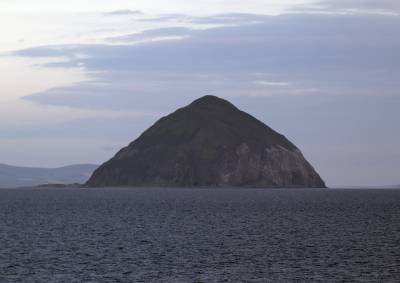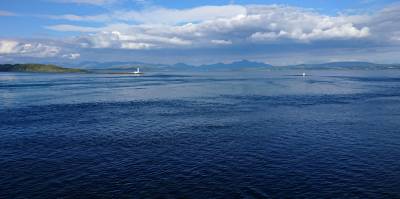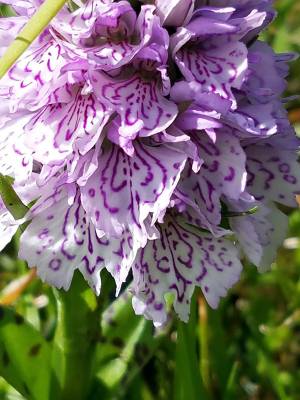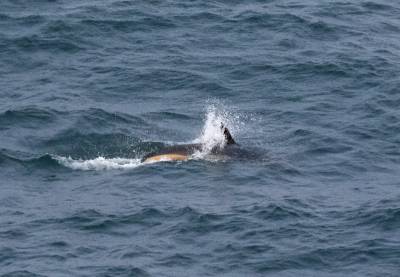My Blog - Jeff Clarke
Updates and photos from around the world on my travels both through pleasure and work
Northern Waters
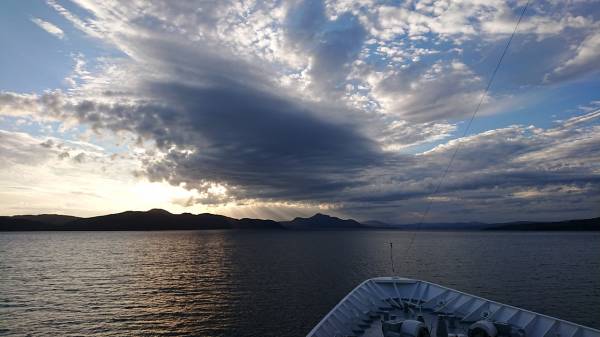
Northern Waters - Isles of Scotland 20th - 28th of June 2019
All images are subject to copyright of the photographer and taken during the tour. Click images to enlarge.
The opinions and views expressed in my blogs are personal to me and should not be regarded as necessarily reflecting those of the individuals, or organisations with which I collaborate, or work for.
On the 20th June, I joined one of my favourite ships, Fred Olsen’s ‘Black Watch’ for their ‘Isles of Scotland’ tour, accompanied by my good friend and fellow naturalist, Clare Gower. I’d invited Clare along for a specific reason, she had never seen a whale and I guaranteed her that we would break her whale ‘duck’. No pressure then.
We set off from Liverpool, with just time for the first photograph of a Kittiwake before the entertainments team meeting. The route to the northern waters would take us out past the Calf of Man and this is where we would find our first cetaceans of the trip, as dusk approached we located 2 Harbour Porpoise and 2 Risso’s Dolphin.
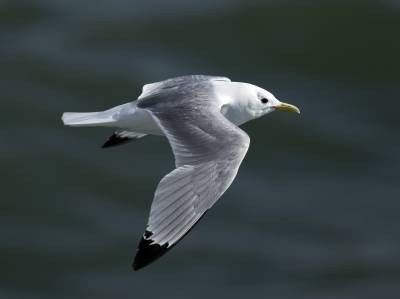
Black legged Kittiwake, Liverpool Bay © Jeff Clarke
Bird-wise the theme for the week would be set by Northern Gannet, Black-legged Kittiwake, Arctic Tern and that tough, medium-sized, tubenose Manx Shearwater. It seemed wholly appropriate that this latter bird would be watched careening over the waves in sight of the islands from which they take their name.
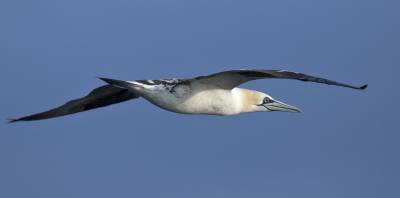
Gannet 2nd Summer near Greenock © Jeff Clarke
Early on the 21st we docked in Greenock. I’d never been to this location before, so we took a taxi to explore an area called Parklea, along the coast adjacent to Newark Castle. Our taxi driver was a local, he was apparently speaking English, I caught about one word in ten, Clare looked utterly baffled.
The wintering waders had long departed, but there was still plenty of interest with Red-breasted Merganser and Eider Duck present in the Clyde estuary. Black Guillemot were nesting in part of the sea-wall. I spent some time attempting a flight-shot, an exercise marked by more failure than success. To compensate for the general lack of birds we focused our attention on some of the interesting plants, including Sea Radish and also Broad-leaved Helleborine.
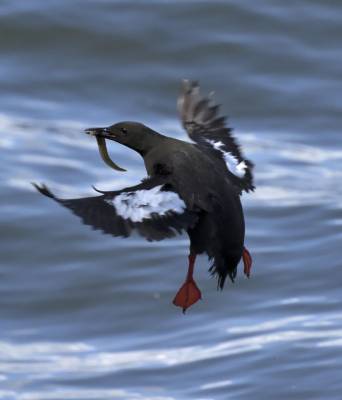
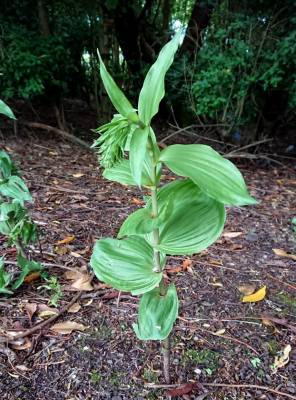
Black Guillemot & Broad-leaved Helleborine, Greenock © Jeff Clarke
Before long we were headed back to our ship. Just as an aside we understood every single syllable of speech from our returning taxi driver, he was a charming Dutch guy! We set off in glorious sunshine out of the Clyde on route to Mull. In a short period we were finding more Harbour Porpoise and were soon into the seabirds, as we approached and then passed the impressive hulk of Ailsa Craig. Common Guillemots were the most abundant species alongside Northern Gannets. We also spied our first European Storm-petrel’s of the trip, as the skittered over the wavelets, in front of the ship. Despite the good conditions we failed to find a whale.
Tobermory on Mull is a delightful location in a stunning setting. It also happens to be home to the Hebridean Whale and Dolphin Trust, so a visit to their centre on the dockside is always on my itinerary. I also gazed into the habourside's clear waters and there spied 3 species of Jellyfish, Lion's Mane, Barrel and Moon Jellyfish.
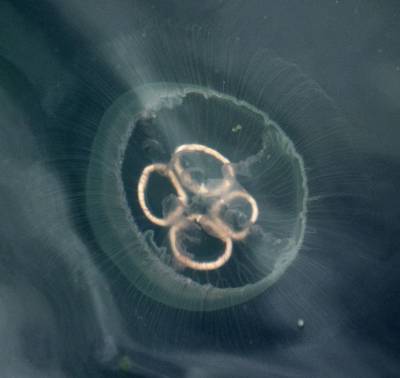
Moon Jellyfish, Tobermory © Jeff Clarke
After a short shore side walk I escorted a Sea Life Surveys tour to view the local wildlife. We cruised out of Tobermory and scoured the shore for one of the UK’s greatest predators. It wasn’t long before it hove into view; two ironing boards strapped together by a horn-yellow butchers hook, sailing through a blue sky. The adult White-tailed put on a bravura performance, before being eventually heckled off stage by an irate Herring Gull. This had been one of Clare’s main targets. She was beaming like a Cheshire Cat!
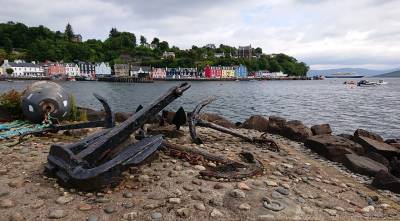
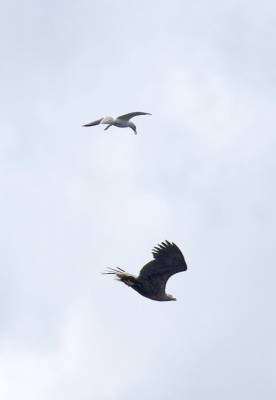
Tobermory, Mull & White-tailed Eagle mobbed by Herring Gull © Jeff Clarke
Soon after we were watching a sleepy Harbour Seal, on rocks close to the shore, before searching for Minke Whales. Sadly, we found none of the latter before our return to the port and Black Watch. Never mind surely the scenic cruising past Duart Castle would bring us this mini baleen whale. In between I delivered my first lecture on the Whales and Dolphins of Scottish Waters. Anticipation built we headed for Deck 10 forward in search of cetaceans. By the time we descended for our evening meal we had seen 9 Harbour Porpoise and 3 Grey Seal. Still no Whale! Fingers crossed that tomorrow would bring a change of fortune.
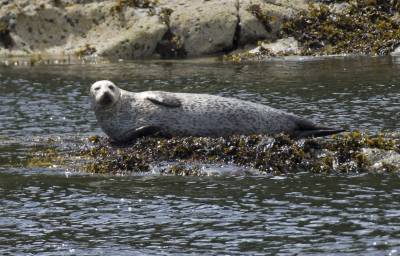
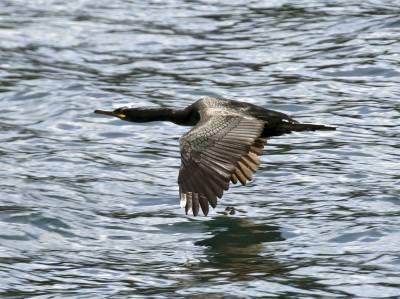
Harbour Seal & Shag, Mull © Jeff Clarke
23rd of June would be a ‘sea day’ as we headed for Shetland. I was delighted to find that the Captain and Navigation Officer had accommodated my idea of taking a route North that would bring us within 3 miles of Tiumpan Head, off the isle of Lewis. We began our transit at 9.00am and Clare and I were there to lead a Whale Watch accompanied by a good number of passengers. All we needed now were the whales and dolphins.

Tiumpan Head, Isle of Lewis © Jeff Clarke
The phrase “I love it when a plan comes together” had never been more apt. Immediately we started the watch, two Harbour porpoise did their characteristic ‘rotating wheel’ breathing routine and moments later pod after pod of Short-beaked Common Dolphin appeared, many heading in to play on Black Watch’s bow, this was immediately followed by our first Minke Whale breaking the surface on our Port side, agonisingly Clare couldn’t see it properly due to the mass of people joining us at the bow. To compensate a small pod of Risso’s Dolphin on the starboard side had a young calf with them.
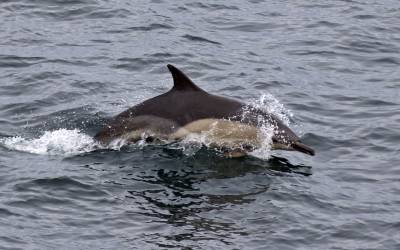
Short-beaked Common Dolphin of Tiumpan Head © Jeff Clarke
A passenger spotted another whale, dead ahead of the ship. It resurfaced and I shouted. “It’s a big whale”. I was then amazed to see this gigantic animal roll to reveal the characteristic big sloping dorsal of a Fin Whale. It’s route would bring it very close to the ship and as it surfaced on our port side I fired off a series of images, showing it’s blow and fin as it powered along in shallow swimming transit fashion. I was cock-a-hoop, my first ever Fin Whale in UK waters! Clare decided she was counting this as her first ever whale. We were joyous and the fun wasn’t over, several more Minke Whales hove into view and in final act of cetacean fireworks a pod of powering White-beaked Dolphins danced through the waves ahead of Black Watch’s bow. In less than an hour and half we had observed 6 species of cetacean and at least 122 individual animals. It was magical and one of my best cetacean events ever in UK waters.

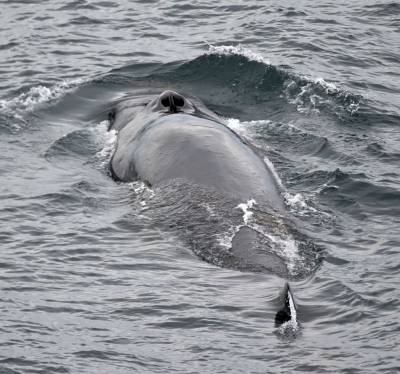
Fin Whale off Tiumpan Head © Jeff Clarke
Seabirds were a similar mix to previous days but with Gannet’s being far and away the dominant species with well over 2000 observed. The oddity of the day was undoubtedly a Collared Dove which joined us well out to sea off Cape Wrath.
On the 24th we were up early for the sail into Lerwick, Shetland and it was immediately obvious that Bonxie’s (AKA Great Skua’s would be a main feature of the day). Sadly, it was just a shortened day ashore. Sheltand really deserves an overnight stay, there is so much to see and do here.
Clare and I opted to hire a car and bomb down to Sumburgh Head. The birds were, as ever, fabulous with so much activity on the cliffs, masses of guillemots, lots of Puffins, though far fewer than I remember here. What was noticeable was the tiny size of the Sandeels the Puffins were bringing back to their burrows. It was fascinating watching the Bonxies harrying the seabirds and more, or less terrorising the Puffins, I gave Clare one of my cameras to practice with and we took hundreds of images of the Bonxies in action. In contrast to the Bonxies, Arctic Skuas were in shockingly low numbers.

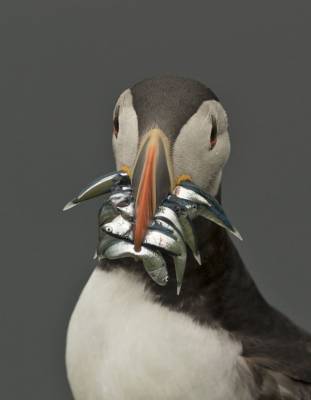
Common Guillemots & Puffin with sandeels, Sumburgh Head, Shetland © Jeff Clarke
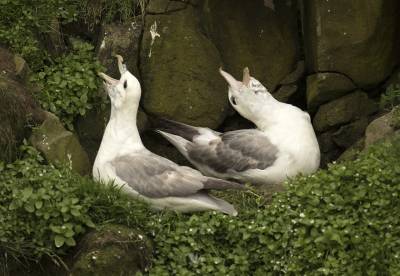
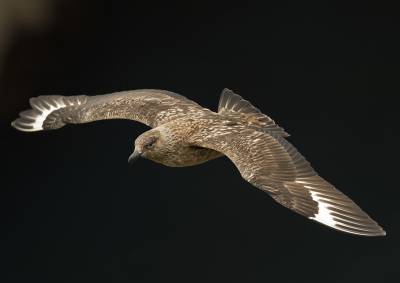
Fulmars & Great Skua (Bonxie), Sumburgh Head, Shetland © Jeff Clarke
The calls of Twite alerted me to their presence and I got a lucky break when they landed below me, giving me the chance to get close and capture their subtle charms, on a lichen encrusted stone wall.
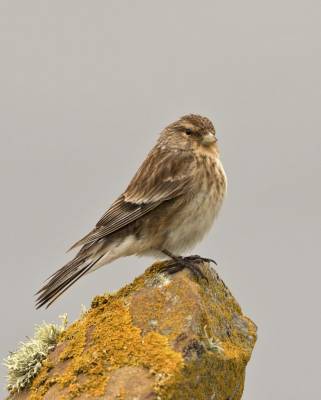
Twite, Sumburgh Head, Shetland © Jeff Clarke
Sumburgh is famous for attracting Orca, but on this occasion they failed to show in the limited time at our disposal. Though the Atlantic Grey and Harbour Seals were probably mightily relieved.
Far too soon we were back on board and cruising toward Torshaven in the Faroe Islands and the only cetacean we encountered before dark were 9 Harbour Porpoise.
Considering this cruise was titled Isles of Scotland, it was a curiosity that we found ourselves in the Faroe Islands, there are loads of amazing Scottish islands to visit, not least St. Kilda. I wish Fred Olsen would cruise there sometimes.
I have a real issue with the Faroe Islands because of their continued slaughter of Long-finned Pilot Whales and Atlantic White-sided Dolphins. They persist in playing the indigenous whaling card to support the local impoverished community with much needed meat. This, of course, is total nonsense. The Faroese are a very modern western European nation and they are wealthy. It is pure male, testosterone fuelled, bloodlust that maintains this hideous ‘tradition’. Just look at this poster, I photographed outside a very up-market establishment, of the ‘blood soaked’ owner. I have a simple philosophy when I visit the Faroe Islands. I contribute not a single krona to their economy. I know many of the passengers on the ship feel the same way as I do.

'Bloodlust' poster, Torshaven, Faroe © Jeff Clarke
Clare and I were up very early for the cruise into Torshaven. Strangely we saw not a single Pilot Whale, or Atlantic White-sided Dolphin in perfect viewing conditions!
We went for a walk in the local park, one of the few places with substantial numbers of trees, just to while away a little time, here we would find hooded Crows, Common Redpolls and somewhat surprisingly, Blackcap, Willow warbler, Chiffchaff and Lesser Whitethroat. The small river that flows through the park held Arctic Char which were readily photographed and the acid heath grasslands were also diverting with Milkwort and also Heath spotted Orchid in flower.
Arctic Char © Jeff Clarke & Heath Spotted Orchid © Clare Gower
We strolled back towards the harbour and here I was delighted to find an incredibly confiding 1st summer Black Guillemot. The water’s clarity meant you could follow its every move as it ‘flew’ underwater (see video). A short time later a drake Eider entering eclipse came equally close. Just as were about to return to the ship a Herring Gull snatched a Long-spined Sea Scorpion from the water and proceeded to manipulate the hapless fish to enable it to eat its spiky-finned victim.
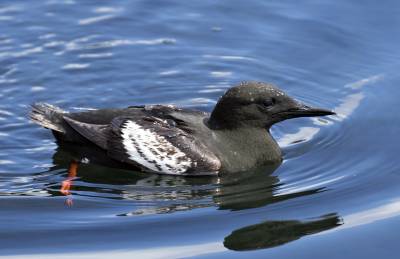
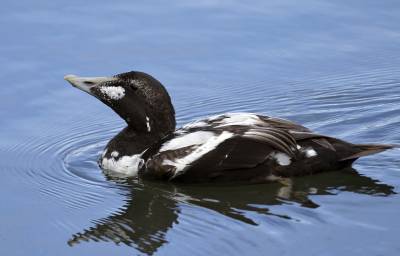
Black Guillemot 1st summer & Common Eider drake in eclipse plumage, Torshaven, Faroe © Jeff Clarke
'Black Guillemot Fishing' video

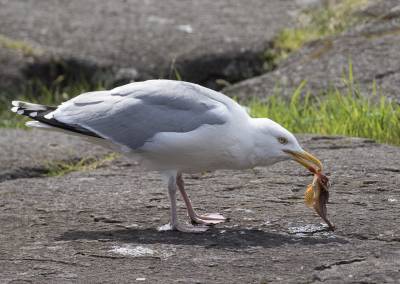
Hooded Crow & Herring Gull with Long-spined Sea Scorpion, Torshaven, Faroe © Jeff Clarke
Back on board I gave my second talk and then headed up for a Wildlife Watch. This time it was largely uneventful as the waters were fairly shallow. However, I suggested people try again around 8pm when we would be hitting deeper waters. Thankfully conditions remained fair and as Clare and I reached the deck again just after 8pm we hit the deep water and somewhere the blue touch-paper was lit. Immediately our first pod of Long-finned Pilot Whales surged past close on the port side. From here until dark at 11.30pm there would barely be a moment’s let-up in the action. Blows like pistons were erupting around the ship as Fin Whale followed Fin Whale, interspersed with more Pilot whales and then joined by scudding Atlantic White-sided Dolphin, the latter barely breaking the surface as they fizzed around the ship. One of the standout moments came when four Fin Whale indulged in chorus line lung feeding. Sadly the fading light meant photography was compromised but the images live long in the memory. At times you didn’t know where to look and I’ve no doubt we missed things, though we did find 4+ Common Bottlenose Dolphins coming in close among the White-sides. This was an exceptionally northerly observation of this species.
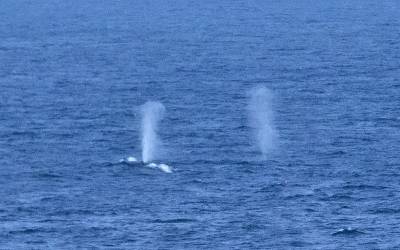
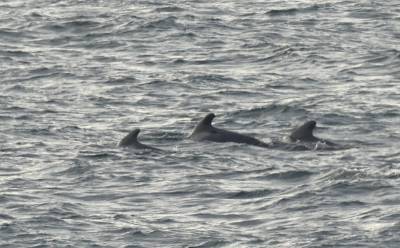
Fin Whale blows & Long-finned Pilot Whales, Faroe-Shetland Trough © Jeff Clarke
Atlantic White-sided Dolphin, Faroe-Shetland Trough © Jeff Clarke
As one of the rorqual whales sounded I saw a distinctly tall falcate fin and I’m almost 100% certain it was a Sei Whale, but we never saw it again to confirm its ID. By the end of the evening we had totalled up an astonishing number of sightings, all from the sides of the ship as it was too blowy to get on the front. More than 20 Fin Whale, plus many unidentified rorqual whale blows, shows the real potential of the Faroe-Shetland Trough, surely there are Blue Whales here. I can’t wait for my next opportunity to cross these waters.
The following morning 26th June, Clare and I joined my cetacean buddies Emma and Russ, in Kirkwall, Mainland Orkney. Before picking up Russ from the airport we explored a headland north of Kirkwall in search of Orca, we failed here but it did give me an opportunity to photograph a swallow in flight and an obliging Meadow Pipit on a post. Orca would be our primary target of the day, but on route south we stopped at a Little Tern breeding site, these delightful little birds were doing well despite their vulnerability to careless dog walkers. A prime example of this came when we found a Fulmar that had been mauled by a dog. After checking it over and the use of a blanket from the car, Russ managed to return it to the sea where it had a chance to recover. We explored various vantage points, including one with a fabulous café called Skerries Bistro where we lunched, before really putting the time and effort in on the Hoxa headland overlooking the island of Swona. A pod of Orca had been reported here the previous day.
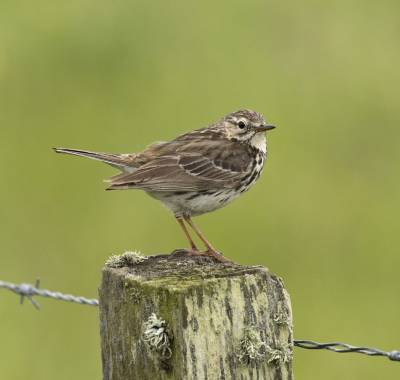
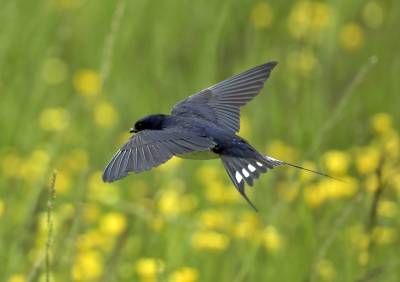
Meadow Pipit & Barn Swallow, Mainland, Orkney © Jeff Clarke
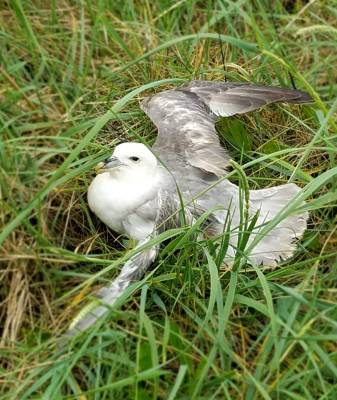
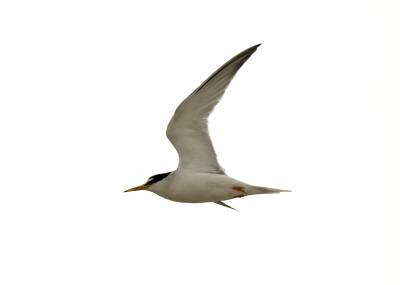
Injured Fulmar © Clare Gower & Little Tern Mainland, Orkney © Jeff Clarke
It was quite breezy, so we gained shelter from some ex-military bunkers and hoped. The three cetacean specialists would surely find our quarry. It was therefore entirely fitting that it would be Clare, the novice whale and dolphin watcher that would find the big black and whites. ORCA!

Me, Russ, Emma and Clare at Hoxa headland, Orkney© Jeff Clarke
They were a fair distance out, though very clear through the scope, in the general direction of Swona as they cruised around in a rather random fashion. Our observations suggested 4 animals, two adult females and a calf plus a Sub-adult male. The male is believed, by a local expert, to be 15 years old. As ever, time had ticked on and we had to head back to the ship before really finding out which way the orca would head. The weather was deteriorating and by the time we had said goodbye to Emma and Russ, the chop on the waves had grown considerably. This became a full blow half-gale by the time we had cleared Orkney and any cetacean hopes were well and truly curtailed. We looked at the weather forecast with hope for the following day.
I checked the conditions as we passed Tiumpan Head, but it was still grim so I went back to bed. Conditions improved noticeably by the time we reached the Sea of Hebrides and following my final talk I gathered a large crowd of would-be whale spotters on deck 10, as the flat calm conditions gave us all hope for the rest of the day.
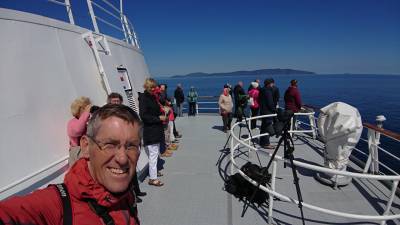
On Deck 10 of Black Watch with the Whale Watchers, Sea of Hebrides © Jeff Clarke
Dolphins were largely noticeable by their absence, but the Minke Whales did not disappoint. In total we picked out 12 between the southern sector of the Sea of Hebrides and the North Channel, including a few reasonably close individuals that most of those watching on board managed to see. A mistimed lunch break meant we missed a reported Orca, but you cannot see everything. The conditions were so calm that we had no difficulty picking out the porpoises and by dusk we had totalled up over 86 individuals.
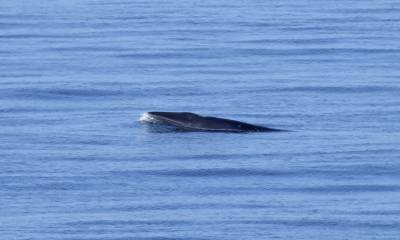

Minke Whale, North Channel © Jeff Clarke
Bird-wise the final day highlights were the sheer numbers of Shearwaters and it was fitting that the biggest rafts were observed as we approached the Isle of Man.

Manx Shearwaters 'rafting' off Isle of Man © Jeff Clarke
We docked early the following morning in Liverpool. It had been a truly memorable trip, that so perfectly demonstrated just how important these islands are to seabirds and cetaceans. In total we observed a minimum of 594 Dolphins, Porpoises and Whales, consisting of a minimum 10 species. Suffice to say Clare and I loved it!

Me and Clare on the Deck 7 bow end, Black Watch © Jeff Clarke
It just leaves me to thank some people and organisations for making this trip so successful. Firstly, to Fred Olsen Cruise Lines and the crew of Black Watch, In particular Captain Pineda and his navigational team for accommodating the route passed Tiumpan Head and to the entertainments team for their help in achieving that. Grateful thanks to my agents at Peel Talent for scheduling me to speak on this tour. Big thanks to Emma Neave-Webb and Russell Neave for ferrying us around mainland Orkney, it was great to see you again. I should also not forget the many passengers and fellow entertainers for their kind comments and friendliness during the whole trip.
Finally, my thanks to Clare Gower for not only finding the Orca but also for putting up with a somewhat untidy cabin mate. Though to be fair we were barely in it as there was just so much to see!


